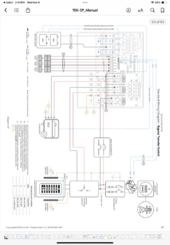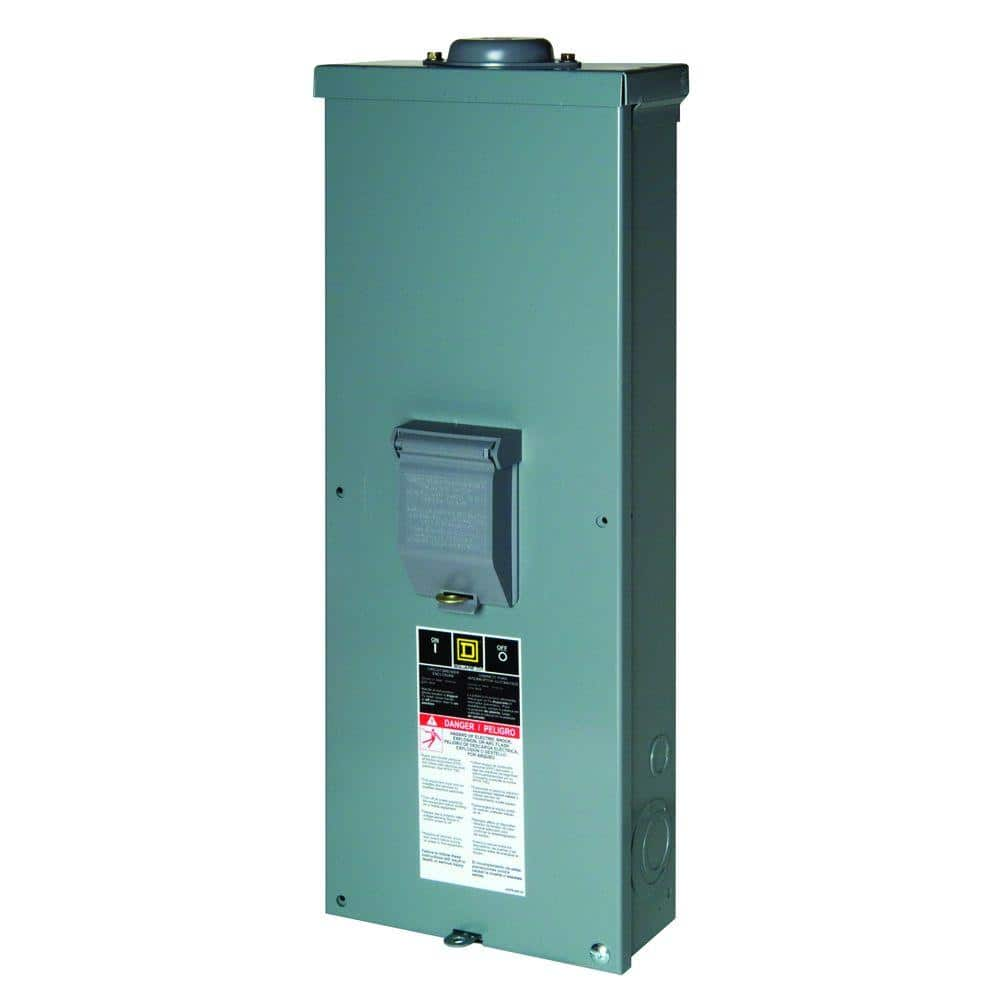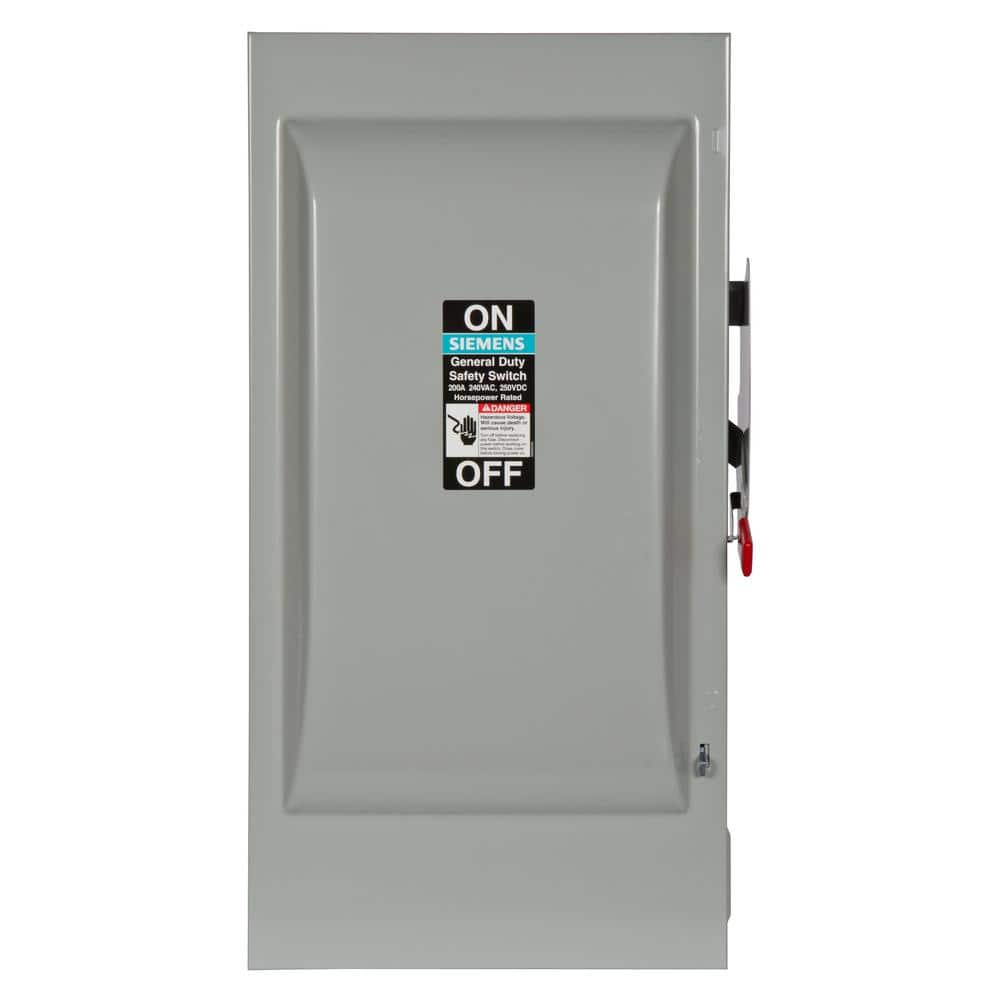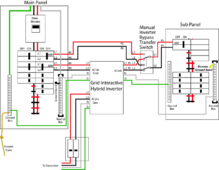I have a manual transfer switch in my setup with the Sol Ark 15K but that does not kill the grid being active in the inverter. So I need to put in a 200 amp ac breaker to make the inverter safe in bypass mode. I was wondering if anyone else has come across this issue and if they have a solution for this problem.
You are using an out of date browser. It may not display this or other websites correctly.
You should upgrade or use an alternative browser.
You should upgrade or use an alternative browser.
Grid breaker for Sol Ark 15K bypass
- Thread starter Leodoggie
- Start date
Ampster
Renewable Energy Hobbyist
I did not take the time to trace the circuit when I was there, but I suspect there is a Polaris T connector in the circuit somewhere. I would start with @Hedges's sugggestion and do a schematic if your permit SLD does have one. I think what that means is when to switch your main two way disconnect, you need to remember to turn off your load switch on the SolArk or it could also feed your main panel.I have a manual transfer switch in my setup with the Sol Ark 15K but that does not kill the grid being active in the inverter.
This is what the Sol Ark 15K manual recommends, my system follows this diagram except Instead of the generator, I have ac coupling.
You can see the grid breaker in the middle of schematic. I don’t want to reinvent the wheel, so if someone has already done this I am curious to the how and what components they used. When the transfer switch is turned to grid instead of the sol ark the grid terminal in the sol ark is still live and a grid breaker would make the inverter safe to work with in a maintenance event.

You can see the grid breaker in the middle of schematic. I don’t want to reinvent the wheel, so if someone has already done this I am curious to the how and what components they used. When the transfer switch is turned to grid instead of the sol ark the grid terminal in the sol ark is still live and a grid breaker would make the inverter safe to work with in a maintenance event.

Yes you are right, when the transfer switch is turned the load breaker must be turned off because the grid will be directly connected and powering my main panel.I did not take the time to trace the circuit when I was there, but I suspect there is a Polaris T connector in the circuit somewhere. I would start with @Hedges's sugggestion and do a schematic if your permit SLD does have one. I think what that means is when to switch your main two way disconnect, you need to remember to turn off your load switch on the SolArk or it could also feed your main panel.
Ampster
Renewable Energy Hobbyist
The more I think about it, assuming there are 3 way Polaris connectors in your wiring, the transfer switch should replace the Polaris connector. That way the grid would only feed the SolArk or the main panel. I had to draw a mental picture to understand it. I wish I had drawing skills that I could post on the forum.
There are trade offs. Your current wiring allows you to do diagnostics on the SolArk when it is not feeding your main panel. It does, however require a two step process for sending the power direct to your main panel. My 12k has a grid disconnect breaker unlike the 15k and I am curious what other 15k installations have done?
There are trade offs. Your current wiring allows you to do diagnostics on the SolArk when it is not feeding your main panel. It does, however require a two step process for sending the power direct to your main panel. My 12k has a grid disconnect breaker unlike the 15k and I am curious what other 15k installations have done?
You are correct this requires some mental gymnastics. But the bottom line is that the transfer switch is used to change from the sol ark feeding my main panel or the grid feeding my main panel. Elliot and I went through all the permutations and this is the only logical way to wire it up. So the procedure is if the sol ark has an issue is to turn of the load breaker off in the sol ark and throw the transfer switch to grid so my main panel is now fed directly from the grid. The problem is that the sol ark grid connection is still live, therefore a need for an extra grid breaker to completely isolate and make the sol ark safe. The new manual I found on line shows the grid breaker, but the manual that I got with my sol ark did not show this so both Elliot and I missed it. So now we have to come up with a way of retrofitting a grid breaker. If you can come up with a way of doing this I am all ears.The more I think about it, assuming there are 3 way Polaris connectors in your wiring, the transfer switch should replace the Polaris connector. That way the grid would only feed the SolArk or the main panel. I had to draw a mental picture to understand it. I wish I had drawing skills that I could post on the forum.
There are trade offs. Your current wiring allows you to do diagnostics on the SolArk when it is not feeding your main panel. It does, however require a two step process for sending the power direct to your main panel. My 12k has a grid disconnect breaker unlike the 15k and I am curious what other 15k installations have done?
Hedges
I See Electromagnetic Fields!
- Joined
- Mar 28, 2020
- Messages
- 20,690
You can get a main breaker only box, or a fusible or non-fusible disconnect.
What do you want, 200A or something lower?
I paid a bit under $200 for Square-D 200A main breaker only in box at Home Depot.
Safety switches tend to cost more and are huge. I've picked up one 200A unfused and a couple 100A fused on eBay. New when I get lucky, often used.
If you have a main panel with loads that aren't backed up, it can feed SolArk, but the problem is 120% rule. That's why I went through main breaker only, then Polaris, fanned out to safety switch and multiple breaker panels. (interlocked breakers in those panels so they can be backed up by inverter or bypassed straight to grid.)
What do you want, 200A or something lower?
I paid a bit under $200 for Square-D 200A main breaker only in box at Home Depot.
Safety switches tend to cost more and are huge. I've picked up one 200A unfused and a couple 100A fused on eBay. New when I get lucky, often used.
If you have a main panel with loads that aren't backed up, it can feed SolArk, but the problem is 120% rule. That's why I went through main breaker only, then Polaris, fanned out to safety switch and multiple breaker panels. (interlocked breakers in those panels so they can be backed up by inverter or bypassed straight to grid.)
So that is what I was thinking, use a 200 amp breaker which is quite compact and avoid having another huge box which is a characteristic of disconnects. And you are right the transfer switch is what bypasses the sol ark and allows the grid to directly feed the main panel. Do you have a part number for that breaker? I found the Square D QBL22200 breaker on line, is that the same one you used? The problem with that breaker is that I will have to diy a box to house it. Thanks for the confirmation that a simple breaker will do the job.You can get a main breaker only box, or a fusible or non-fusible disconnect.
What do you want, 200A or something lower?
I paid a bit under $200 for Square-D 200A main breaker only in box at Home Depot.
Safety switches tend to cost more and are huge. I've picked up one 200A unfused and a couple 100A fused on eBay. New when I get lucky, often used.
If you have a main panel with loads that aren't backed up, it can feed SolArk, but the problem is 120% rule. That's why I went through main breaker only, then Polaris, fanned out to safety switch and multiple breaker panels. (interlocked breakers in those panels so they can be backed up by inverter or bypassed straight to grid.)
Hedges
I See Electromagnetic Fields!
- Joined
- Mar 28, 2020
- Messages
- 20,690
Here's what I used.
Tall, but not nearly as big as a 200A safety switch.

Well, not all switches are as big as the 600V AC/DC one I was thinking of. This one is halfway reasonable

Nice thing about fuses is you might be able to get very fast trip. But maybe not in that form factor?
Consider also just a box with fuses, maybe the really fast "semiconductor" type if desired. You could shut off the main, remove fuses, turn main back on. Fuse holders for class-T and similar are pretty compact. Could mount in a small box.
Tall, but not nearly as big as a 200A safety switch.

Square D QO 200 Amp 2-Pole Outdoor Circuit Breaker Enclosure with QOM2200VH Breaker QOM2E2200NRB - The Home Depot
The Square D by Schneider Electric QO 200 Amp Outdoor Circuit Breaker Enclosure includes a two-pole QOM2 frame sizes circuit breakers 100-225 amp capacity for use as an exterior disconnect. This breaker
www.homedepot.com
Well, not all switches are as big as the 600V AC/DC one I was thinking of. This one is halfway reasonable

Siemens 200 Amp 240-Volt 3-Pole Non-Fusible General Duty Safety Switch GNF324 - The Home Depot
Siemens offers a wide range of switch products to service the residential, commercial and industrial markets. Safety switches are available in 30-1200 Amp ratings in all enclosure types. The VBII safety
www.homedepot.com
Nice thing about fuses is you might be able to get very fast trip. But maybe not in that form factor?
Consider also just a box with fuses, maybe the really fast "semiconductor" type if desired. You could shut off the main, remove fuses, turn main back on. Fuse holders for class-T and similar are pretty compact. Could mount in a small box.
Ampster
Renewable Energy Hobbyist
The suggestion by @Hedges is a good one. You do not need a bus bar, just a breaker which will accept the cable on each end and can be mounted in box. I think some of the main breakers are configured that way.If you can come up with a way of doing this I am all ears.
What a great idea, I would never had thought of using fuses, it definitely sounds plausible, and would fit the small form factor I am looking for, will check it out.Here's what I used.
Tall, but not nearly as big as a 200A safety switch.

Square D QO 200 Amp 2-Pole Outdoor Circuit Breaker Enclosure with QOM2200VH Breaker QOM2E2200NRB - The Home Depot
The Square D by Schneider Electric QO 200 Amp Outdoor Circuit Breaker Enclosure includes a two-pole QOM2 frame sizes circuit breakers 100-225 amp capacity for use as an exterior disconnect. This breakerwww.homedepot.com
Well, not all switches are as big as the 600V AC/DC one I was thinking of. This one is halfway reasonable

Siemens 200 Amp 240-Volt 3-Pole Non-Fusible General Duty Safety Switch GNF324 - The Home Depot
Siemens offers a wide range of switch products to service the residential, commercial and industrial markets. Safety switches are available in 30-1200 Amp ratings in all enclosure types. The VBII safetywww.homedepot.com
Nice thing about fuses is you might be able to get very fast trip. But maybe not in that form factor?
Consider also just a box with fuses, maybe the really fast "semiconductor" type if desired. You could shut off the main, remove fuses, turn main back on. Fuse holders for class-T and similar are pretty compact. Could mount in a small box.
Yes absolutely that would work, Hedges idea of using fuses is intriguing.The suggestion by @Hedges is a good one. You do not need a bus bar, just a breaker which will accept the cable on each end and can be mounted in box. I think some of the main breakers are configured that way.
Similar threads
- Replies
- 0
- Views
- 173
- Replies
- 48
- Views
- 1K
- Replies
- 24
- Views
- 705
- Replies
- 4
- Views
- 189



